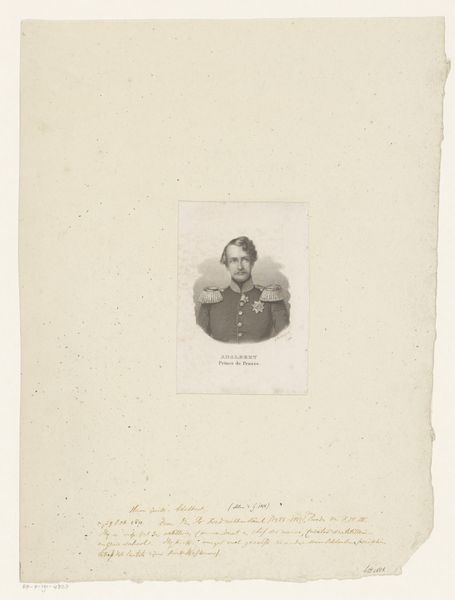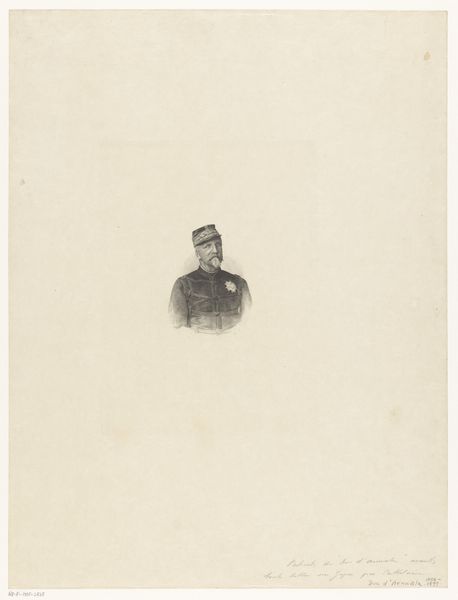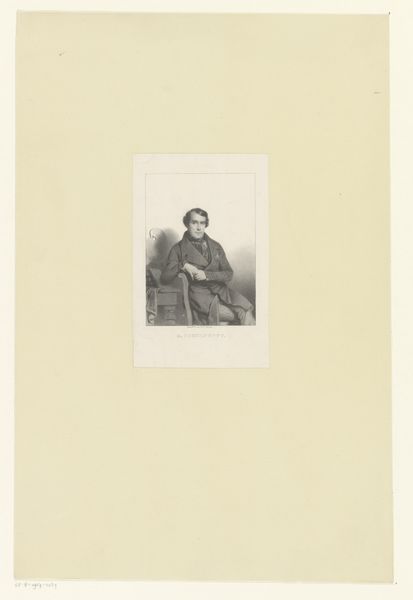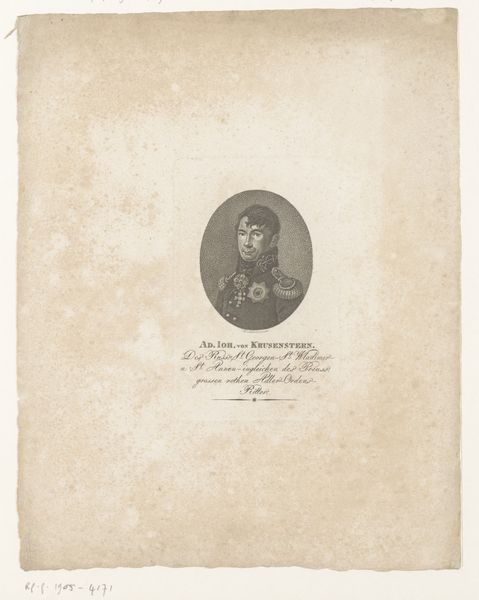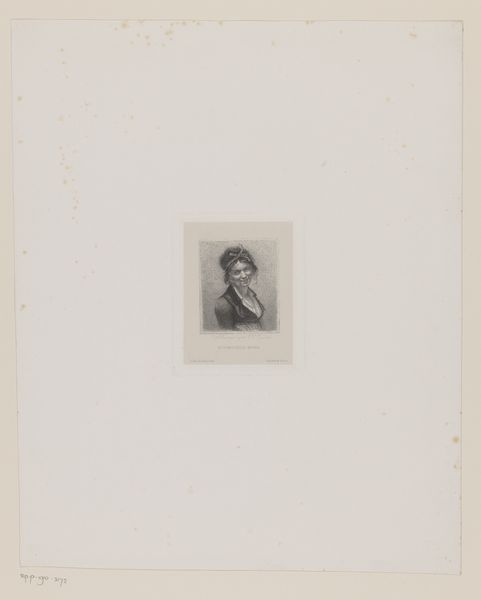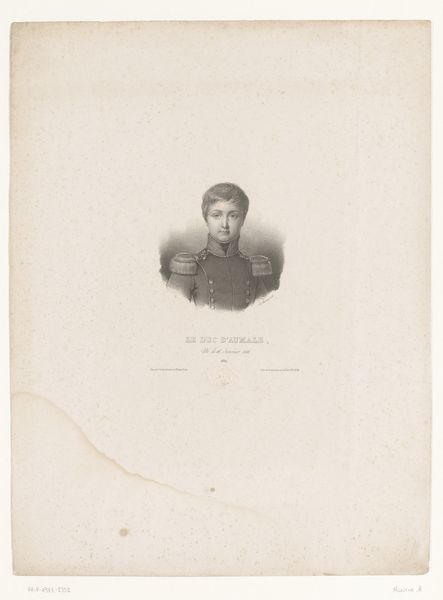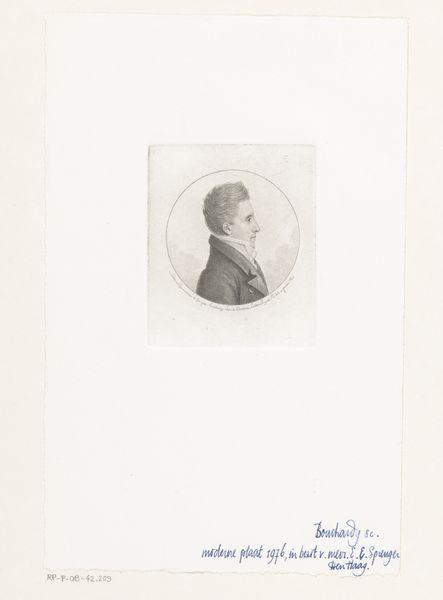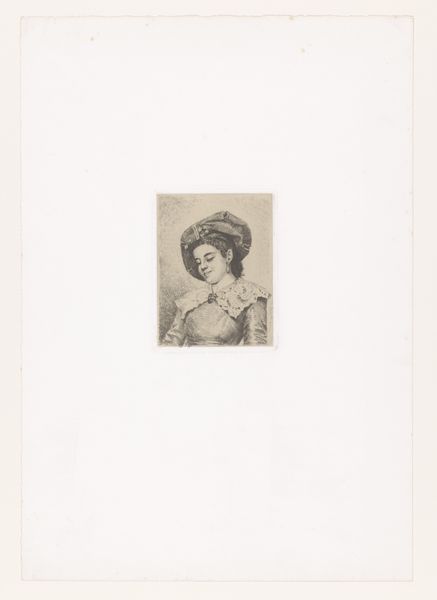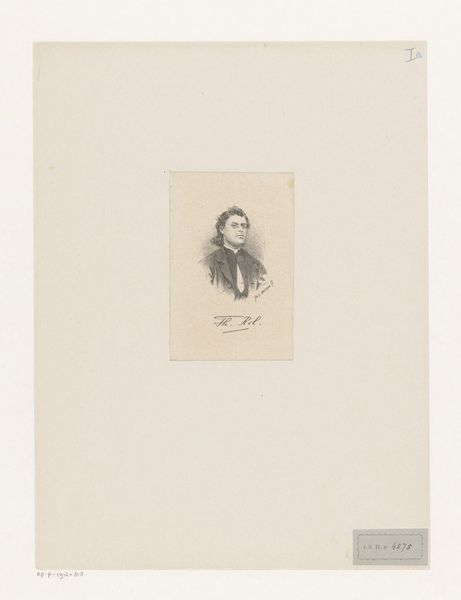
Dimensions: height 181 mm, width 115 mm
Copyright: Rijks Museum: Open Domain
Curator: What a captivating study in graphite and engraving! This is a "Portret van Theodor Körner," dating from 1829 to 1901, attributed to Gustav Seidel. Editor: It possesses a striking delicacy. The muted color palette gives it such a quiet, almost mournful air, wouldn't you say? Curator: Undoubtedly. But I wonder if we can push beyond mere aesthetic appreciation. Theodor Körner was a celebrated poet and soldier during the Napoleonic Wars, a figure synonymous with German nationalism and sacrifice. Consider the context: this portrait memorializes a man who died fighting for a specific vision of German identity. Editor: I see what you mean. And yet, the almost classical symmetry in the composition, the play of light and shadow across his face...there's a timeless quality that transcends that specific historical moment. It evokes a broader sense of romantic heroism, don't you think? Curator: I agree with the broader sense of romantic heroism. But, look at his uniform. Note the way the engraving captures the details, those cords and embellishments hinting at military status. How do we reconcile the valorization of military strength with a critique of militarism, particularly within a modern context? It requires unpacking the complexities embedded within seemingly simple images of power and national identity. Editor: The layering of meaning is undeniable, which only proves its artistic merit. I mean, that precisely controlled tonality—the artist used a print-making technique to render a narrow range of light values! Curator: Exactly. This tonal control is about so much more. Consider how Körner was embraced and manipulated by later political movements, including the Nazis. How might an understanding of visual culture assist in deconstructing these destructive ideologies? Editor: Perhaps by teaching us to truly look—to unpack the artistry, to deconstruct its formal essence? To see how line and light come together? Curator: Yes, but in addition, acknowledging the historical circumstances that gave rise to that formal arrangement, to examine our position as viewers influenced by the same cultural and social biases reflected in this romanticized military figure. It allows for an evaluation beyond the aesthetic! Editor: You are right. Considering both viewpoints does indeed unlock richer interpretation of the image! Curator: Absolutely, hopefully, more respectful understanding of historical representation is gained through our approach.
Comments
No comments
Be the first to comment and join the conversation on the ultimate creative platform.
